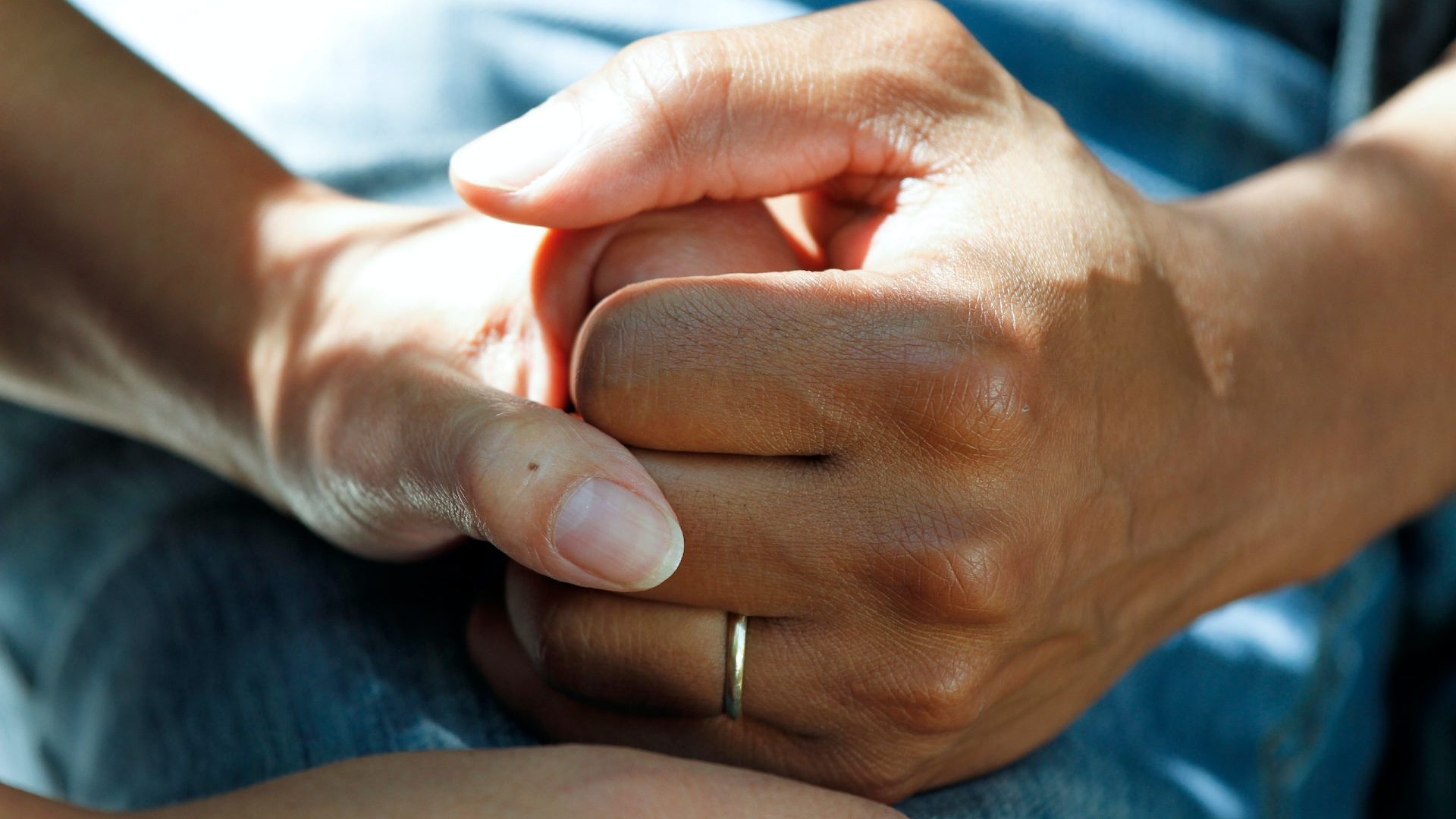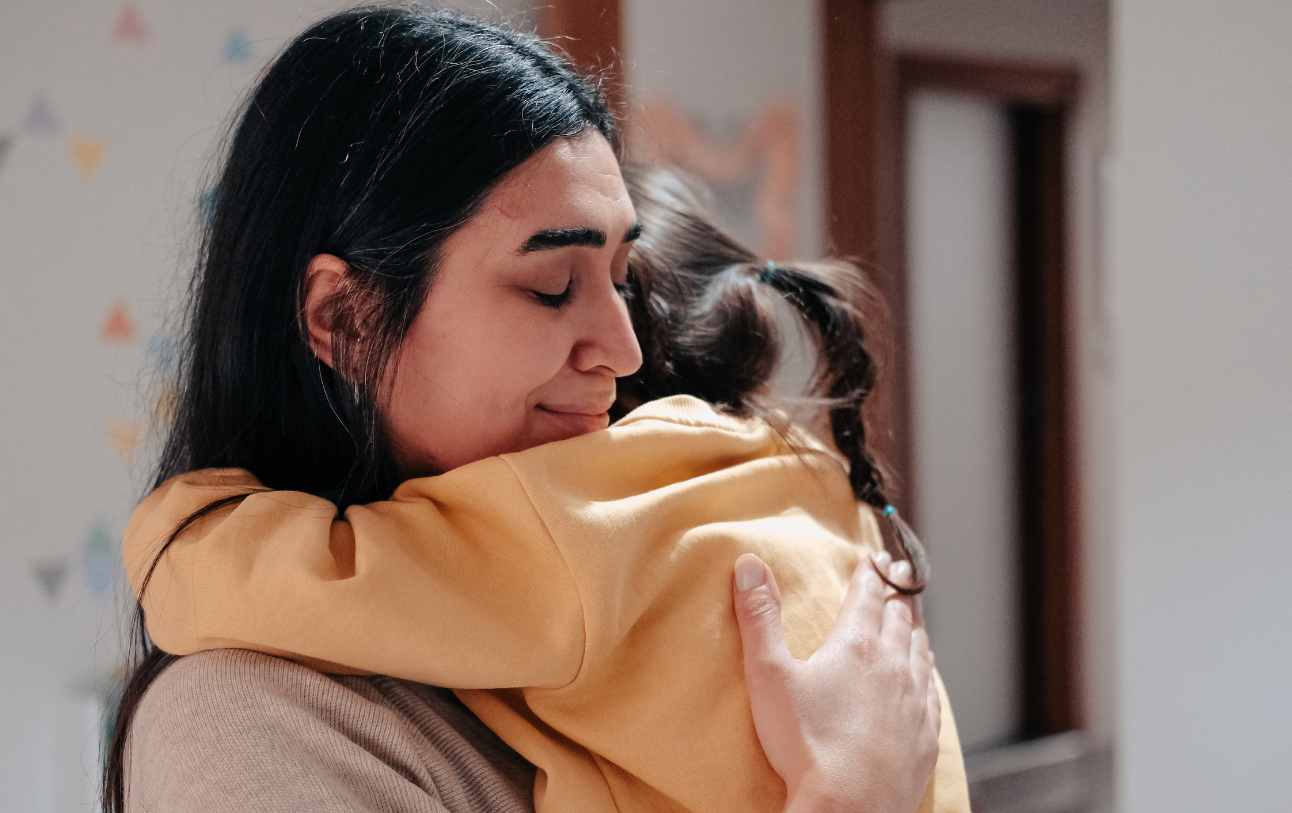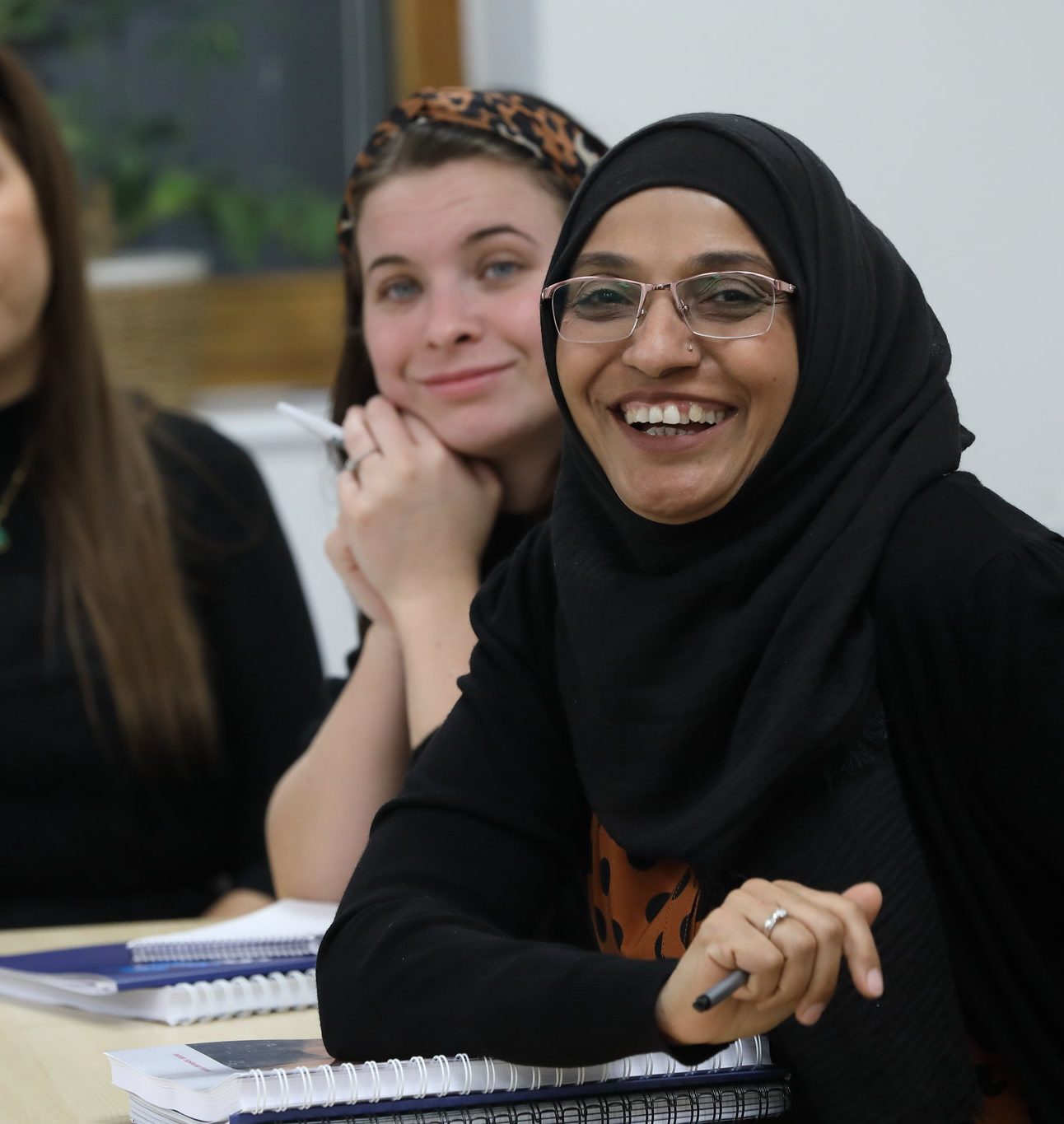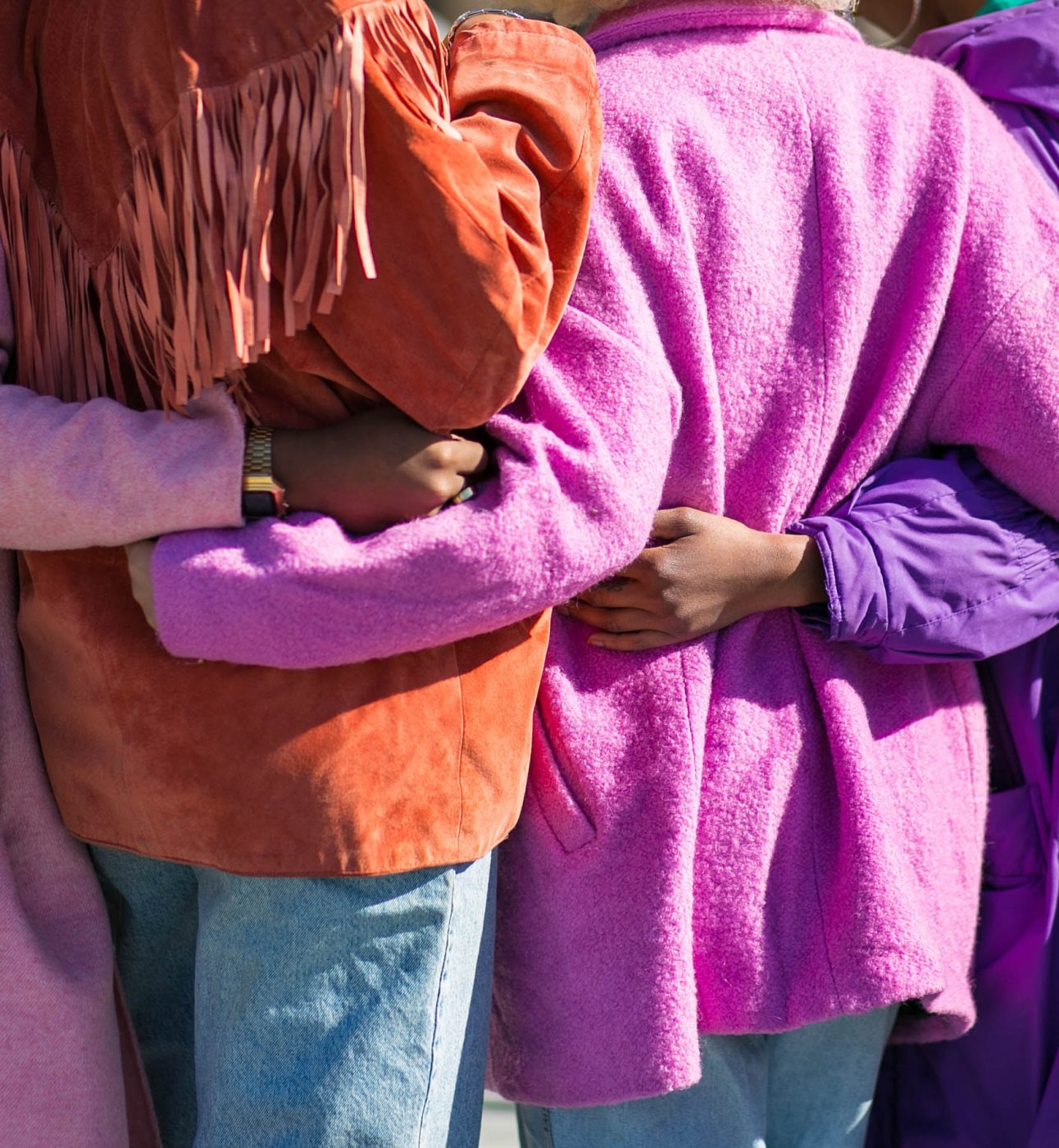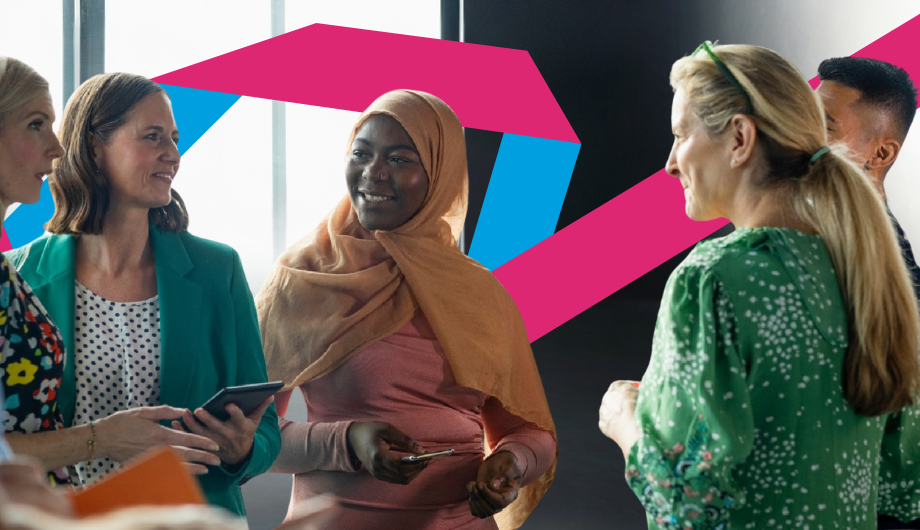
SafeLives works with organisations and professionals to transform the UK’s response to domestic abuse. Over the years we have developed a unique approach that combines survivor voice, evidence, and best practice to make a real difference to families across the UK.
How we started our work – the risk-based approach
We were set up as Co-ordinated Action Against Domestic Abuse (Caada) by our founder, Diana Barran, Baroness Barran MBE, in 2004.
At the time, a handful of small charities were trying out new ways to help domestic abuse victims. These early innovators included Advance, ASSIST, Blackburn and Darwen District Women’s Aid, Cardiff Women’s Safety Unit, Leeds Women’s Aid and Worth Services. Their ideas for multi-agency working and advocacy for victims produced astonishing results. Diana set out to spread them nationwide, so more victims could benefit. It’s an approach we’re still following today.
The big idea was to start from risk. If you understand the level of risk that victims face, those at high risk of serious harm or murder can get the fastest multi-agency help to meet their needs. This was different to most domestic abuse services at the time.
We started by pioneering the use of the Dash risk checklist to see how much danger a victim is in. Our aim was to create a consistent language around risk assessment that all partner agencies understood. We followed this up with accredited training for Idvas – specialists who advocate for victims and help them become safe.
We also got professionals to work together to tackle domestic abuse, setting up a Marac process in every area, and recording and analysing their data to see how they could improve. Today, as a result of our work in these early years, victims in the most serious danger get help first.
Gathering evidence to make the case
To secure ongoing funding, we knew that services must prove their quality and effectiveness. So, in 2008, we introduced Leading Lights, a national standard for domestic abuse services. We also created Insights, an outcomes measurement system for Idva services. These tools gave local domestic abuse services the evidence they needed.
By collecting and analysing data at the local level, we were able to build a national picture of the sector as a whole – and the difference it was making to victims. This allowed us to start producing flagship policy and research reports, using our evidence to make the case for continued funding for the sector. Our very first research report – Safety in Numbers: a multi-site evaluation of Idva services – was published in 2009.
By collecting and analysing data, we were also able to gain clarity on our long-term strategic goals. Our ambition was to cut the number of victims experiencing high-risk domestic abuse in half, reducing it from 100,000 per year to 50,000 per year. We also wanted to reduce the time it took for victims to seek help, from an average of 5 years to 2.5 years. With these goals in mind, we established our first strategy and set out to make a meaningful impact in the lives of those affected by domestic abuse.
The increased data also helped us understand that domestic abuse was harming a lot of young people. So we created training for professionals working in Family Intervention Projects – local projects that support families with multiple, complex issues. And in 2013 we created a new role to support young people who were affected by domestic abuse – the Young Person’s Violence Advisor (Ypvas). We followed this up by giving Ypvas the right training and support to do their job well.
Reflecting on the experiences of survivors
By 2014, our evidence showed that the risk-based approach was making a real difference to victims and their families. But we knew there was a vital missing component to our work – the voices of survivors, who are experts by experience.
We began resolving this by encouraging colleagues in SafeLives to share their experiences of domestic abuse. Our aim was to model authentic experience and to create a safe and open environment for other survivors to do the same. We also worked with a panel of Survivor Pioneers to inform our future work. Now, the voices of those with lived experience are at the heart of everything we do, and our Pioneers still play a vital role in our work today.
Expanding to a whole family approach
By 2015, our data analysis and work with children and young people showed that we needed to do more to tackle domestic abuse perpetrators, as part of a whole family approach. We realised there was too much focus on asking victims and children to change their lives. Not enough was being done to hold perpetrators to account, and to encourage them to change their behaviour. Our data showed that high-harm perpetrators were simply moving from one victim to another.
So we worked in partnership with Respect and Social Finance to develop The Drive Partnership. Drive trains professionals to work as case managers with high-harm domestic abuse perpetrators. The case managers work closely with other agencies to hold perpetrators accountable and to support them to change their behaviour.
A pilot evaluation showed that Drive led to reductions in abuse, increased victim safety, and lowered social costs related to domestic abuse. Adult victim-survivors in Drive cases were around three times less likely to experience physical abuse. Drive has received continued funding and is now an important part of our current services.
In 2015, we also started working with police forces across the country on Domestic abuse matters. This is a national cultural change programme for the police, designed to create create improvements and consistency in the responses of local forces.
In 2016, we developed a pilot project called One Front Door. This brought together different agencies, with particular input from child safeguarding and domestic abuse services, to help identify the needs and risks of every family member simultaneously. Our goal was to connect individuals with the support they needed earlier on, whether they were a victim or a perpetrator of domestic abuse.
We ran the pilot in seven local authority areas across England and saw some great results, including new perpetrator programmes being commissioned for the first time, and improved cooperation between different agencies.
From whole family to whole picture
We started to think about what else we could to support victims who were ‘falling through the net’ and not getting the provision they needed. With this in mind, in 2016 we launched our Spotlights series, which provides the latest research, information and practical resources to professionals who may be working with vulnerable client groups.
Between 2018 and 2020, we also began working in partnership to reduce inconsistencies that existed in the response to domestic abuse. Our thinking was that if we worked together to build a whole picture of each family, that reflects how people actually live their lives, we can help people earlier and more effectively.
Building on the foundation of a risk-led approach, we started working alongside SafeLives Pioneers and two sector-leading domestic abuse services in Norfolk and West Sussex, which acted as Beacon sites. Through this project we developed innovative interventions tailored to the needs of each person experiencing domestic abuse, as well as those perpetrating abuse. These included:
- Support for victims and children experiencing medium-risk abuse
- Assistance for those with complex needs exacerbated by domestic abuse
- Specialised help for families who want to stay together
- Support for children and young people through age-appropriate services
- Support for survivors to recover from trauma and build resilience
A four-year evaluation showed this new approach really improved the safety of families, with 76% reporting that the physical abuse stopped.
Between 2017 and 2020, we also worked in partnership to address gaps in healthcare through a project called Pathfinder. This was led by Standing Together and included expert partners Against Violence and Abuse, IRISi, and Imkaan.
The goal was to address the links between domestic abuse and health by improving the capacity of health professionals to respond effectively to survivors, in hospital trusts, mental health trusts and GP practices across 18 NHS Trusts in England. The findings were used to create a national model for how healthcare can respond to domestic abuse.
As we expanded our approach and range of activities, we made sure that we did not lose sight of our fundamental approach – improving practice, looking at the evidence and listening to the voices of survivors. 2019-20 was our biggest training year ever, with nearly 13,500 voluntary, public and business sector professionals trained.
Building on this approach as we move into the future
In 2020, Covid-19 disrupted everything, but we continued to make strides by taking a systems approach to improving local responses.
We worked with over 40 areas in England and Wales, including local authorities, children’s services, Police and Crime Commissioners, and police forces. We helped them to collaborate more effectively, streamlining multi-agency working to achieve better results for both victims and perpetrators. This was based on the lessons learned from our One Front Door pilots.
In recognition of the fact that the best way to reduce and prevent harm is to stop abuse before it starts, we developed our Safe Young Lives work. These are a connected range of projects that establishes what works for children and young people to keep them safe from being harmed, or harming, in a domestic abuse context.
And after years of careful policy and public affairs work, we were pleased that many of our priorities – as well as the voices of survivors – were reflected in the Westminster Government’s Domestic Abuse Act (2021) and Tackling Domestic Abuse Plan (2022).
Ten years after our original strategy was set in 2012, we realised that our work had succeeded in reducing the length of time it took high risk victims of domestic abuse to get help – from 5 years to 2.5 years. However, there were still too many victims at high risk of serious harm or murder, with the overall number not really shifting from 100,000.
With this in mind, we set out a refreshed strategy for the future, with goals established until 2024. For a current view of our work, read Our strategy and Our impact.
SafeLives – a timeline
| 2004 |
Coordinated Action Against Domestic Abuse (CAADA) is founded. The Dash risk checklist is created, and practitioner toolkits are created to embed it across England and Wales. Accredited Idva training is developed for the first time and over the next few years it is rolled out across the UK.
|
| 2006 |
Marac chairs, coordinators and representatives training is rolled out across local areas.
|
| 2008 |
To provide evidence of ‘what good looks like’, Leading Lights – a service quality standard for domestic abuse services – and Insights – an outcomes measurement tool for Idva services – are developed.
|
| 2009 |
CAADA publishes its first national research report using the data it has collected: ‘Safety in Numbers: a multi-site evaluation of Idva services’.
|
| 2011 |
The government funds the Marac Development Programme, and CAADA starts quality assuring Marac. Domestic abuse training for Family Intervention Projects is also delivered.
|
| 2012 |
Ypva training is developed by CAADA for the first time and rolled out nationally. The Scottish Government funds Independent Domestic Abuse Advocates (Idaa) for the first time.
|
| 2014 |
CAADA rebrands and becomes SafeLives. Our approach to survivor voice is developed, with the help of SafeLives Pioneers.
|
| 2015 |
Our work evolves into a Whole Family Approach. We work in partnership on Drive to tackle high harm perpetrators. Domestic Abuse Matters – a police cultural change programme – begins.
|
| 2016 |
Our One Front Door pilot project begins, linking children’s social services and domestic abuse services through multi-disciplinary meetings. We produce a series of resources called Spotlight, which shine a light on ‘hidden’ survivors.
|
| 2017 |
We start working with partners on the Pathfinder project, which works to improve support for survivors accessing health services across 18 NHS areas.
|
| 2018 |
Our new strategy – The Whole Picture – is produced. Two beacon site projects start working to support the whole family. Whole Lives Scotland begins work to improve provision throughout the devolved nation.
|
| 2019 |
Safe Young Lives work commences – My Story Matters research helps us to understand young people’s perceptions of abuse in their romantic relationships.
|
| 2021 |
Safer Sooner, a core Marac development offer for Scotland is created. We refresh our strategy, and now have goals to take us to 2024.
|

